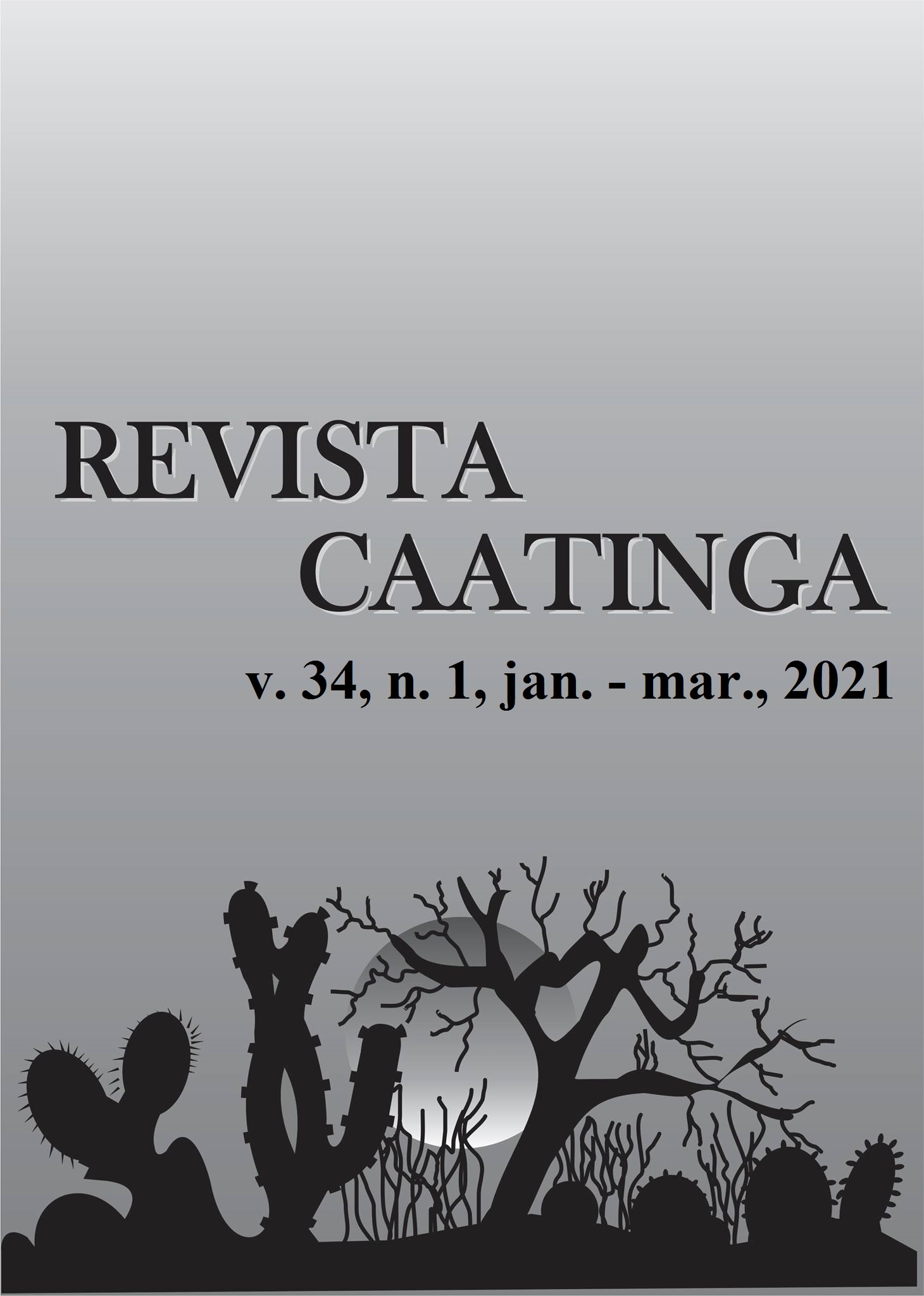RESISTANCE ELICITORS ON PRODUCTION AND POST-PRODUCTION PERFORMANCE OF POTTED LISIANTHUS
DOI:
https://doi.org/10.1590/1983-21252021v34n104rcKeywords:
Eustoma grandiflorum (Raf.) shinn. Ornamental plant. Quality. Resistance induction. Potted flowers viability.Abstract
Lisianthus is an important ornamental species, whose cultivation in pot still requires studies, mainly regarding the use of alternative management. Thus, the aim of this work was to evaluate the influence of resistance elicitors on the production and post-production quality of potted lisianthus. Plants grown in pots were treated with two elicitors: (E1) phosphorylated mannano-oligosaccharide and (E2) citric bioflavonoids and phytoalexins, in the doses (D) of 1 and 2μL.L-1 (E1D1 1μL.L-1, E1D2 2μL.L-1, E2D1 1μL.L-1, E2D2 2μL.L-1 and control), with 5 replications, in a completely randomized design. After opening the first flower buds, the plants remained in the greenhouse for 15 days, until they reached at least 3 open flowers, when were transferred to the room conditions (24 ± 2 oC and 72 ± 2%) for another 15 days. The application of elicitors did not influence the culture cycle or the size of the stem. There was an increase, however, in the number of viable buds and open flowers, in addition to an increase in flower’s useful life paralleled to the reduction of senescent flowers, in relation to the control. The dose of 2μL.L-1 of the E2 kept the percentage of viable open flowers in relation to the control for at least another 5 days, reducing the percentage of senescent flowers. Together, with the application of the E2 elicitor in potted lisianthus, the viability of the flowers can be prolonged, maintaining quality and delaying senescence, and, in this way, increasing the market period.
Downloads
References
AHMAD, H. et al. Evaluation of lisianthus (Eustoma Grandiflorum) lines for commercial production in Bangladesh. International Journal of Business, Social and Scientific Research, 5: 156-167, 2017.
AHMED, K. B. M. et al. Chitosan and its oligosaccharides, a promising option for sustainable crop production- a review. Carbohydrate Polymers, 227: 115331, 2020.
ALENCAR, M. S. R. et al. Induction of defense mechanisms in tomato plants by saprobic fungi filtrates against early blight disease. Revista Caatinga, 33: 671-678, 2020.
ALMEIDA, J. M.; CALABONI, C.; RODRIGUES, P. H. V. Lisianthus cultivation using differentiated light transmission nets. Ornamental Horticulture, 22: 143-146, 2016.
ARANEGA-BOU, P. et al. Priming of plant resistance by natural compounds. Hexanoic acid as a model. Frontiers of Plant Science, 5: 1-12, 2014.
BACKES, F. A. A. L. et. al. Produção de lisianthus cultivado em vasos com diferentes soluções nutritivas e formas de condução. Horticultura Brasileira, 24: 6-10, 2006.
BURKETOVA, L. et al. Bio-based resistance inducers for sustainable plant protection against pathogens. Biotechnology Advances, 33: 994-1004, 2015.
CASTILLO-GONZÁLEZ, A. M; VALDEZ-AGUILAR, L. A; AVITIA-GARCÍA, E. Response of lisianthus (Eustoma grandiflorum [Raf.] Shinn) to applications of growth regulators. Acta Horticulturae, 1263: 241-244, 2019.
CAVASINI, R. et al. Carbohydrate reserves on postharvest of lisianthus cut flowers. Ornamental Horticulture, 24:12-18, 2018.
FERRANTE, A. et al. Post-production physiology and handling of ornamental potted plants. Postharvest Biology and Technology, 100: 99–108, 2015.
GURGEL, L. M. S. et al. Efeito de indutores de resistência no controle da antracnose do bastão do imperador (Etlingera elatior). Anais da Academia Pernambucana de Ciência Agronômica, 13: 223-233, 2018.
HALEVY, A. H.; KOFRANEK, A. M. Evaluation of lisianthus as a new flower crop. HortScience, 19: 845-847, 1984.
LÓPEZ-GUERRERO, A. G. et al. Effect of oligosaccharins on the vase life of lisianthus (Eustoma grandiflorum Raf.) cv. ‘Mariachi blue’. The Journal of Horticultural Science and Biotechnology, 95: 521-529, 2019.
MUBAROK, S.; SUMINAR, E.; KAMALUDDIN, N. N. Ethylene Inhibition Using 1-Methylcyclopropene and Future Perspective for Tropical Ornamental Plants. Asian Journal of Plant Sciences, 18: 1-8, 2019.
NOORDERGRAAF, C.V. Production and marketing of high quality plants. Acta Horticulture, 353: 134–148, 1994.
NOWAK, J.; RUDNICK, R. M. Postharvest handling and storage of cut flowers, florist greens, and potted plants. Oregon: Timber Press. 1990. 210 p.
ÖZKAN, H.; ÖZEN, F. The effect of gibberellic acid (GA3) on post-germination morphometric parameters of lisianthus [Eustoma grandiflorum (Raf.) Shinn.] ‘Mariachi Pure White (F1)’ cultivar. Mugla Journal of Science and Technology, 2: 145-151, 2016.
PALIYATH, G. et al. Postharvest biology and technology of fruits, vegetables, and flowers. New York: John Wiley & Sons, 2009. 498 p.
ROMANAZZI, G. et al. Induced resistance to control postharvest decay of fruits and vegetables. Postharvest Biology and Technology, 122: 82–94, 2016.
SAEEDI, R. et al. Calcium chelated with amino acids improves quality and postharvest life of lisianthus (Eustoma grandiflorum cv. Cinderella Lime). HortScience, 50: 1394-1398, 2015.
SARDINHA, D. H. S. et al. Phytostimulants influence the vase life of Heliconia psittacorum CV. Golden Torch. Postharvest Biology and Technology, 155: 140–148, 2019.
SHEIKH, F. et al. Study on effects of ascorbic acid and citric acid on vase life of cut lisianthus (Eustoma grandiflorum) ‘Mariachi Blue’. Journal of Ornamental Plants, 4: 57-64, 2014.
YAN, J, et al. Complete plastome sequence of Eustoma grandiflorum (Gentianaceae), a popular cut flower. Mitochondrial DNA Part B, 4: 3163-3164, 2019.
Downloads
Published
Issue
Section
License
Os Autores que publicam na Revista Caatinga concordam com os seguintes termos:
a) Os Autores mantêm os direitos autorais e concedem à revista o direito de primeira publicação, com o trabalho simultaneamente licenciado sob a Licença Creative Commons do tipo atribuição CC-BY, para todo o conteúdo do periódico, exceto onde estiver identificado, que permite o compartilhamento do trabalho com reconhecimento da autoria e publicação inicial nesta revista, sem fins comerciais.
b) Os Autores têm autorização para distribuição não-exclusiva da versão do trabalho publicada nesta revista (ex.: publicar em repositório institucional ou como capítulo de livro), com reconhecimento de autoria e publicação inicial nesta revista.
c) Os Autores têm permissão e são estimulados a publicar e distribuir seu trabalho online (ex.: em repositórios institucionais ou na sua página pessoal) a qualquer ponto antes ou durante o processo editorial, já que isso pode gerar alterações produtivas, bem como aumentar o impacto e a citação do trabalho publicado (Veja O Efeito do Acesso Livre).







